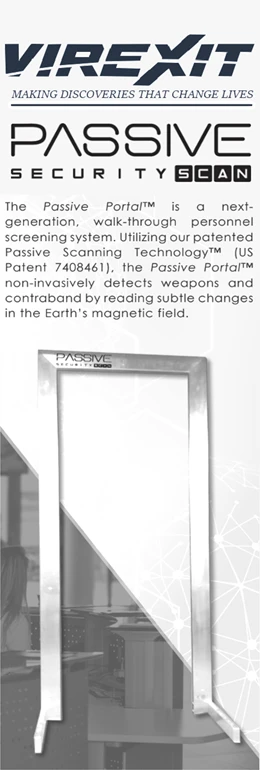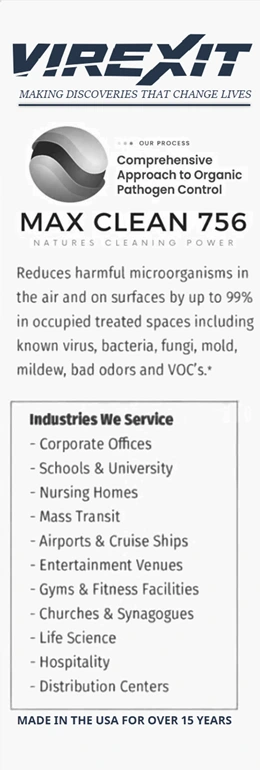Best Commercial Air Purifier Technology
For Schools and Classrooms
Air quality in schools is a significant concern. Studies have shown that students are exposed to viruses, bacteria, germs, and cross-contamination daily. This leads to health problems or environmental sensitivities. In addition, the air inside of classrooms also contains mold spores and dust mites, which are all allergens that can cause an allergic reaction for some people. Thankfully, there are products available to help with this problem! This blog post will give you four tips about how air purifiers in the classrooms could benefit teachers, staff, and students alike and choosing the best commercial air purification system for schools and classrooms.
The Benefits of Air Purifiers For Schools and Classrooms
Tip # One: Air purifiers can help improve the air quality in a classroom. When the air quality is improved, it can decrease absenteeism due to illness and increase productivity. For example, a student may have compromised immune systems, making them more susceptible to being sick while in class. An air purifier can remove all the contaminants that would cause that illness.
Tip # two: Air purifiers can help to reduce allergies and asthma symptoms. Students and teachers who suffer from respiratory problems remove the allergens that trigger an allergic reaction or asthma attack – meaning you could see a reduction in students with these conditions!
Tip # Three: Air quality is essential to help create a healthy learning environment for students and teachers alike! A clean air classroom will allow students to focus on their work, stay healthy, and enjoy their time in the classroom.
Tip # Four: Air purifiers can help reduce the amount of dust in a classroom. Dust can aggravate allergies and asthma, so you could see a decrease in symptoms by using an air purifier. Additionally, when there is less dust in the air, it will also mean less cleaning is required!
There are many benefits to using an air purifier in a school or classroom setting! By improving the air quality, you can help to create a healthy and comfortable environment for everyone. Not only will this lead to better productivity and decreased absenteeism rates, but it could also improve the overall health of teachers, staff, and students!
The science is precise; air purifiers are beneficial for schools and classrooms. Nevertheless, how do you know which one will work best? First, it is essential to learn how each technology works. Here are seven technologies to consider when deciding on an air purifier for your school or classroom.
Best Commercial Air Purifiers For Schools and Classrooms
UV Air Purification
UV air purifiers for schools and classrooms is one of the ways to kill germs, bacteria, and mold spores by using UV light. There are many kinds of UV air purifiers in the market today that you can purchase, but one thing in common with all of them is their ability to kill many microorganisms without using chemicals. The downside is that once the UV starts to get dusty, which can happen quickly, it will lose efficiency and significantly impact the light bulb’s irradiation. The dust covering the UV bulb will cause it to be less effective in sanitizing. Shadowing is a common issue with UV technology. Distance and exposure time to the light is required to be effective. They use a short wave of ultraviolet light, which reacts with those pathogens and kills them. The best way to explain UV is to liken it to a candle. You have a flame on the top of the candle. If you run your hand through it slowly, you will get burned. If you go fast, you will not. You will not get burned if you move your hand slowly but way above the candle. UV is very distance and time-based (see image below), so you have to have many UV bulbs in a duct system to ensure that it touches all the air, especially if you are moving a high amount of air.
Ionizers/Bipolar Ionizers
Ionizers air purifiers for school and classrooms mostly produce negative ions (see image below). It helps activate a lot of negative ions, which help balance out the positive ions (like pollen) already in the air. Doing so creates a healthy environment for people and plants alike. However, it is short lived. Even though they may reach out of the duct system or get into an area to do surfaces, they usually have a very short half-life.
Furthermore, we have seen tests with these in the real world, and in some cases, they do not reach everywhere they claim, like reaching students’ desks, backpacks, and more. So it is crucial to size these correctly, put them in locations correctly, move the air quickly enough, and be the most effective use of an ionizer. There is sometimes some additional manual cleaning needed. As I mentioned with dust, a familiar complaint customers have about ionizers is that they leave dust on surfaces. For installation, it is primarily used in ducts for incoming air.
Air Purifiers Developed By NASA
NASA uses many air purifiers today to clean their space stations. The advantage of this is that it has been proven to work and has many positive reviews. These kinds include ionizers, HEPA filters, and UV lights, among many others. It works because they use titanium dioxide to treat air by taking in air and then reacting with UV light to produce hydroxyl radicals and superoxide ions. Most of these reactive oxygen species cannot produce ozone, and some occasionally do. However, they do not have that long-lived output for the most part. Therefore, they treat in the air ducts or the air that’s coming to the purifier itself. It is not reaching surfaces when it comes to long distances. Some will claim surface treatment, but you have to be careful. It is not in a lab at a set distance from the purifier, whereas it may not reach a door in a larger environment like a school library or cafeteria.
PCO (Photo-Catalytic Oxidation)
This powerful technology uses oxidation to get rid of organic contaminants in your school facilities’ air. Although some claim they do surfaces, they only produce hydroxyl radicals & superoxide ions for surfaces that do NOT reach very far to destroy pathogens, including viruses. It is similar to the NASA air purifiers.
PHI Photohydroionization
PHI is another technology for purifying schools and classrooms’ air quality using UV-based systems. It works by breaking down metals, VOCs (volatile organic compounds), odors, and other common contaminants in your indoor growing facility’s air. PHI is also very similar to NASA air purifiers and PCO. For surfaces, it releases hydro-peroxides, superoxide ions, and hydroxide ions. These are friendly oxidizers. However, they are short-lived and will not reach long-distance surfaces.
Ozone Generators
Ozone generators use a process that creates ozone from oxygen. The upside to this is that it is very effective at getting rid of odors and other particles in the air and surfaces. However, it is not safe to use when people are present in the room, and after a few minutes, the ozone dissipates, and you have to keep reintroducing it. So this is most commonly used as a shock treatment while no people are present.
ROS Purifiers (Reactive Oxygen Species)
They are among the most effective purifiers in the air and surfaces, especially. These purifiers destroy pathogens and odor and reduce cross-contamination by creating 7 (ROS) cleaning agents. Five short-lived highly Reactive Oxygen Species
- Atomic oxygen
- Singlet oxygen
- Hydroxyl radical
- Superoxide
- Peroxynitrite
And two long-lived Reactive Oxygen Species;
- Gas-phase H2O2- or dry hydrogen peroxide,
- Low concentration levels of O3-ozone
That further sanitizes room air and surfaces. So again, in addition to treating the ambient air as it passes through the reaction chamber, using the H2O2 and O3 diffused into the environment, This technology will further sanitize all Surfaces and control Odor, resulting in clean air and surfaces 24/7.
Best Commercial Air Purifier’s Checklist For Schools And Classrooms
Here is a checklist to help you find the best commercial air purifiers for schools and classrooms when you research schools.
- Treat all surfaces with the purifier. (not just near the purifier, but all surfaces)
- Require low electricity usage
- Monitor the levels of the unit’s production 24/7
- Have a sanitizer created and output from the purifier itself, or else the air will only be purifying.
- Organic and no-chemicals consumed.
- Be safe while people are present
- Offer manual adjustments to the unit’s power
It is essential to invest in a high-quality air & surface purifier, or else schools might have a chance of risking students, teachers, and staff getting sick and spreading a potential virus!
We Done The Research For You
Finding the best commercial air purifiers for schools and classrooms can help you create a cleaner environment and keep schools healthier for students to breathe clean air. With that in mind, we have taken the time to put together this checklist of questions for you to ask yourself when looking at potential options so that you can find the best one possible. If you want to jump to the front of the line, we have done all your research for you! MaxClean756’s RoS surface and air purifiers are the only kind that can sanitize surfaces (including long-distance) and airborne germs organically without using chemicals.
Our advanced surface and air sanitation process provides SAFE, EFFECTIVE, and CONTINUOUS 24/7 inactivation and neutralization of airborne and surface viruses, microbials and odor control while people are present.
For a FREE consultation with MaxClean 756 Solutions expert who can help you protect your building occupants from harmful microorganisms, toxic mold, fungi, odors, and VOC’s with long term exposure cancer risks, please send us a message.
We would be happy to answer any of your questions and provide assistance in finding the right solution that will suit your needs for the most optimized indoor air environment that will boost productivity and performance for occupants and result in increases to a businesses bottom line.
Virexit Technologies:
Toll free: (888) USA-VXIT, Ext. 2
Toll free: (888) 872-8948, Ext 2
Local: (469) 206-8850, Ext. 2




